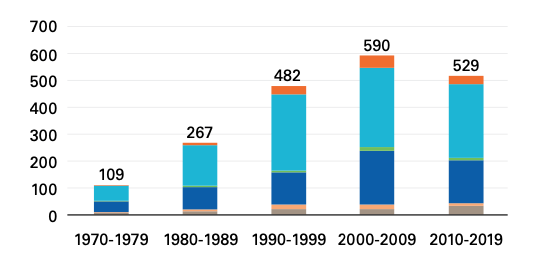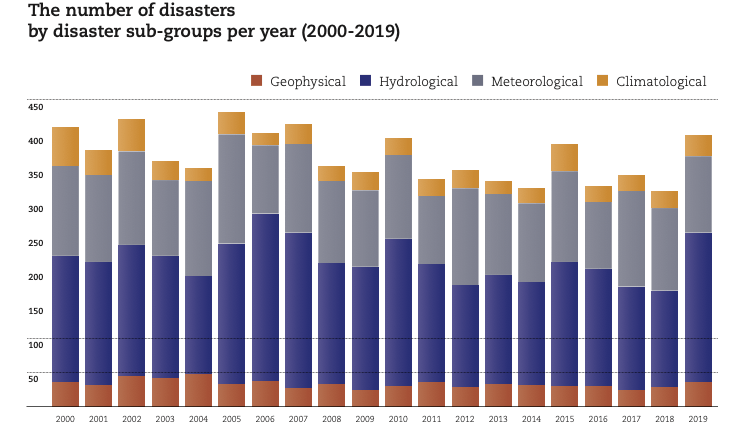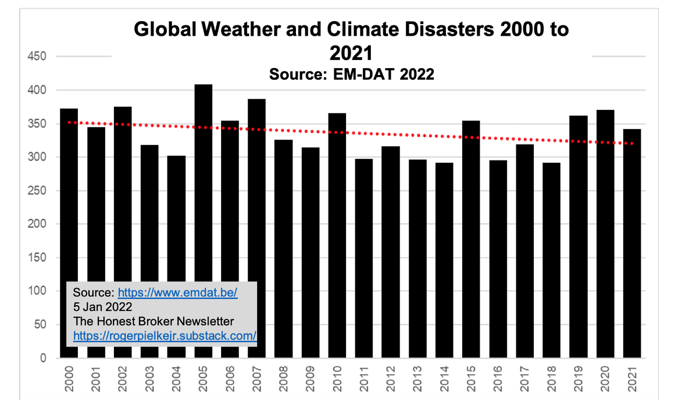More On: Climate
Emails show that radical groups are influencing the climate agenda of Biden and Kerry
Leonardo DiCaprio gave money to a 'dark money' group that then gave the money to climate nuisance lawsuits
CBS promotes a study that says climate change is to blame for rising rates of childhood obesity
Climate protesters arrested outside Congressional Baseball Game in Washington, D.C.
Climate protesters in the UK stick themselves to paintings in art galleries
Increasing weather-related damage costs are insufficient proof of climate change.
"The number of weather, climate and water extremes are increasing and will become more frequent and severe in many parts of the world as a result of climate change," declared World Meteorological Organization (WMO) Secretary-General Petteri Taalas last August. He was speaking in connection with the release of a 2020 World Meteorological Organization research that stated the frequency of weather catastrophes had "grown by a factor of five over the last 50 years, driven by climate change, more intense weather, and improved reporting." Keep in mind the final caveat. The weather and climate disasters enumerated in the WMO report are depicted in the graph below.

![]()
The Emergency Events Database (EM-DAT), which was developed in 1988 by the Centre for Research on the Epidemiology of Disasters, is used heavily in the WMO report. Natural disasters from 1900 to current are compiled and reported by the EM-DAT. The compilers do recognize, however, that the growth in the number of catastrophes included in the database over time may be due in part to greater reporting throughout the world.
Similarly, in 2020, the United Nations released its Human Cost of Disasters report, also using EM-DAT data, which parsed global disaster trends between 2000 and 2019. Below is that report's chart tracking the annual toll of disasters around the globe.

So, if the geophysical catastrophes are omitted from the EM-DAT dataset, how does the recent trend in weather and climate disasters look? Roger Pielke Jr., a political scientist at the University of Colorado, has done exactly that, and he's updated it for the year 2021.

"The data show that from 2000 to 2021, the number of global weather and climate disasters declined by about 10%, which is very good news and completely contrary to conventional wisdom," notes Pielke over at his new Honest Broker Substack. "The period since 2000 is viewed as the most reliable for data reliability, but it is safe to say that even since 2000, coverage has improved. So the 10% decline is possibly an underestimate." Note that even the WMO report shows a decline between the 2000–2009 and 2010–2019 periods.
"Of course, don't use catastrophe data to suggest anything about changes in weather or climate - data on specific weather and climate variables is always more useful for tracking changes in climate," Pielke correctly advises. Temperature and precipitation patterns throughout the world are examples of data. Humanity is losing more homes and infrastructure due to adverse weather, owing to the fact that a wealthier and more crowded globe has placed far more property at risk. Despite the alarmism over escalating weather disaster damages, calculating their expenses is insufficient evidence of man-made climate change.






















